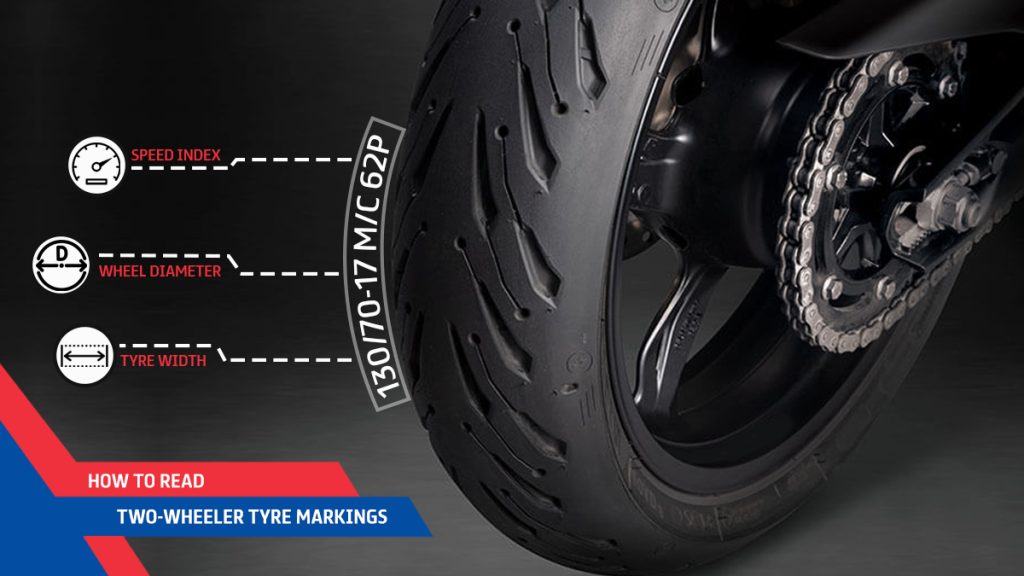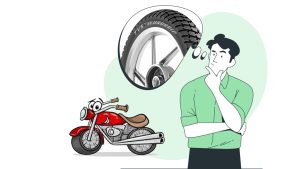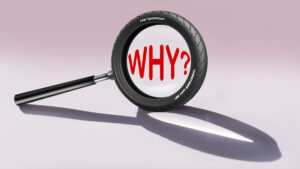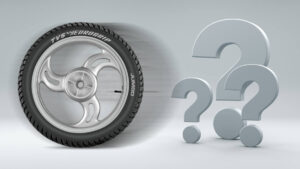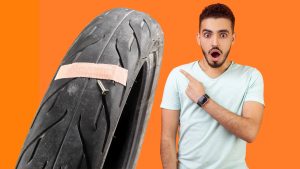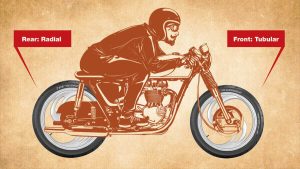Ever wondered what the different alphabets and writings on the tyres are? What do they mean? Why are they required?
Today let’s learn about the letters and numbers imprinted on the sidewall of your tyres. Psssst we’re also going to break 3 myths as well!
Tyres are the only contact your two-wheeler has with the road while in motion. It is, thus, extremely important to ensure that the tyres installed on your two-wheeler are of the correct specification, or there may be some very undesirable consequences. For example, a tyre which is too wide, if installed on a commuter bike would reduce not just its acceleration and efficiency but also make it dynamically unstable despite having a wider contact patch. On the other hand, a slim tyre installed on a high performance machine would get shredded to bits before you know.
There are 4 common imprints on the tyre with a combination of numbers & alphabets. Let’s break them down 1 by 1.
Eg: “140/60 R 17”
1. The first thing is the Tyre Width / Section Width
Section width is the width of the tyre in millimeters.This is the widest point from sidewall-to-sidewall. A larger number indicates a wider tyre and vice versa. The proper size and tire type are important to assure safety and best tire performance. Increasing the tyre size can be an option but there are additional factors which need to be considered which we shall cover at the end of this article.
2. The second is Aspect ratio.
Aspect ratio is the height of the tyre as a percentage of the width. We are not getting into the maths of it all but aspect ratio is an important sizing calculation in tyre choice. Tyres with low aspect ratio are typically meant for high performance and have better lateral stability. A tyre with a low aspect ratio increases the curvature of the tyre. The bigger the curvature, the better is the contact patch between the tyre and the road providing utmost grip & control.
On the flip side a tyre with lower aspect ratio is prone to sidewall damage and can even lead to damage of the rims when ridden on broken roads. That is why commuter tyres come with high aspect ratio – increased durability. This is one of the reasons why off-road tyres also come with high aspect ratio.
3. The third is Tyre Construction
Tyre Construction is identified by the letter following the aspect ratio. The most common designation is R, which stands for radial construction. Radial type constructuction has replaced cross ply construction and is now common across all modern tyres across all vehicle types.
Radial construction of tyres typically leads to lesser fuel consumption than a bias-ply construction tyre. Radial ply tyres also provide better traction and improved cut resistance in the tread area. They also run much cooler than bias ply tyres. The cooler the tyre, the less the wear, and longer the life.
4. The last number indicates the Wheel Diameter and is in ‘inches’.
Tyre diameter generally ranges from 12-inchs for scooters and go upto 21-inches for motorcycles. Front & rear wheel diameters may vary based on the vehicle. Front wheels are skinner compared to rear wheels to help in better turning which increases the traction on the road. Front tyres are also skinnier to help wade through still water while riding on wet roads, and mud & slush while riding off-road.
We always want to find the best tyres for our bikes. When it’s time to change them, we always wonder which is the best tyre, which size to buy, where to buy it from.
If you’re not comfortable going out searching shop to shop, log onto www.tvewurogrip.com/two-wheelers/. We have an entire range of TVS Eurogrip tyres, tailormade for each vehicle.
If you want any guidance you can always open the chat window and we’ll be there to assist you in finding the best set of tyres for your two – wheeler!
5. The alphabet after the numbers is the Speed Rating.
There are a total of 4 numbers of ratings for tyres. “T” for speeds upto “190 kmph” for scooters all the way up to “V” for speeds upto “ kmph” for super bikes! Based on the 2 wheeler you own, the manufacturer would have used a tyre which handles, say a 20% higher speed than the vehicle can reach.
Similarly, if you want to upgrade the tyres to achieve higher speeds, you have to get a tyre that is rated for a speed that is 20% higher than what your bike is capable of reaching.
6. The Load Capacity of a tyre determines what weight each tyre is able to carry.
Load ratings and speed ratings should be looked at together when you buy a new tyre. It is vital that you check with your vehicle handbook as to what capacity should be put on your vehicle.
7. The right tyre pressure is mentioned in the owner’s manual of the motorcycle.
But there is also a pressure rating mentioned on the sidewall. This is not to be confused with the recommended pressure, but it is the maximum pressure the tyre is capable of holding.
8. On an asymmetric tyre the indicator shows which side of the tyre must face outwards. Directional tyres have an indicator to show which direction of rotation is required.
9. The last marking we want to talk about is not on the sidewall, it is the Tread wear indicator which helps gauge tread depth. The indicator is this small piece of rubber within the grooves of the tyre. The tyres have to be checked regularly to see If the tread thickness has reached close to the height of the indicator. If it has, then it’s time to get a new pair of shoes for your bike!
Here are the 3 myths that we are busting Today!!!
Myth 1: Adding a wider tyre leads to a drop in fuel efficiency. You will not lose mileage if you upgrade your tyres to a bigger size than the stock tyre size.
Myth 2: A wider tyre leads to increased traction on the road: Having a wider tire may not necessarily increase your traction on the road but switching to a softer compound can definitely improve the traction. Further, a wider tyre without tread life or lesser air pressure will not give the desired traction while riding.
Myth 3: Wheel balancing is not important: Wheel balancing plays a vital role in longer tyre life. Regular checks help to find out uneven wear and adjust the wheel weights to extend tyre life.

